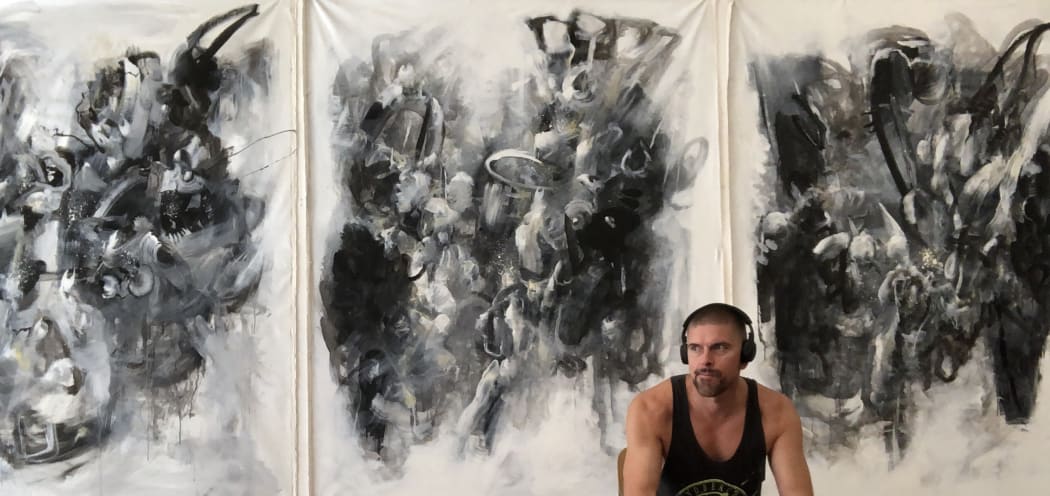
Abstract art is often a misunderstood concept and, at times, it can be difficult to analyse successfully. Despite sometimes sharing similar visual elements, abstraction is undoubtedly diverse in its intent. Abstract art is defined by Tate as ‘art that does not attempt to represent an accurate depiction of a visual reality’. Shapes, colours, forms and gestural marks are used to create a visual language that is often unique to an artist; whether that is visually or conceptually.
Ian Rayer-Smith is a shining example of an artist that utilises abstraction, due to his lack of interest in painting something that already exists. Instead, paint is used to explore new forms that carry emotional weight. The use of images, within his practice, are purely used as a reference point and therefore, these images are not replicated. By layering contemporary culture with his own personal experiences, the artist creates paintings that pose a series of questions. There is no definite statement, or even a narrative, being pushed to the forefront.

In terms of his influences, the artist is fascinated by mark making techniques used by Abstract Expressionists. His use of composition, light and movement refer back to techniques applied in the Renaissance. At times the artist incorporates a traditional colour palette, adding a classical feel to his abstractions. This can be seen in his small scale body of work titled ‘Signals’ and, more specifically, in the piece ‘Staccato’.

When looking at its colour and composition, ‘Staccato’ appears to bare resemblance to ‘The Storm of the Sea of Galilee’ by Rembrandt. As Rembrandt’s only seascape painting, it depicts the Biblical story of Jesus calming the storm on the sea of Galilee. Undoubtedly chaotic and atmospheric, the movement found within Rembrandt’s Marine painting can easily be translated into gestural marks and abstracted forms; techniques which are believed to be used in Ian Rayer-Smith’s ‘Staccato’.
Despite the thought of a possible connection, the use of a reference picture by Ian Rayer-Smith is unknown. This effect is undoubtedly comparable to the Rorschach test, in the sense that the audience will make their own interpretations of the work. This further amplifies the artist’s goal of creating paintings that pose a series of questions. The lack of narrative is freeing; encouraging the viewer to engage with not only their mind, but also with their emotions.

